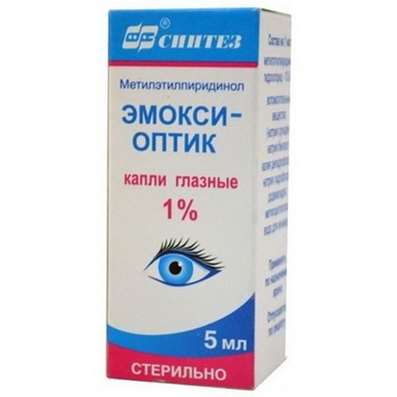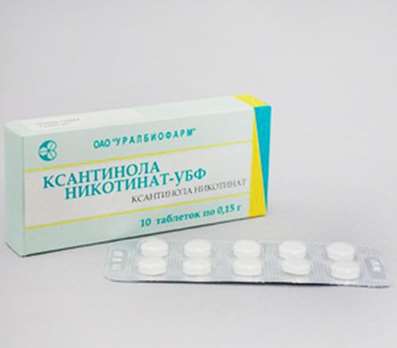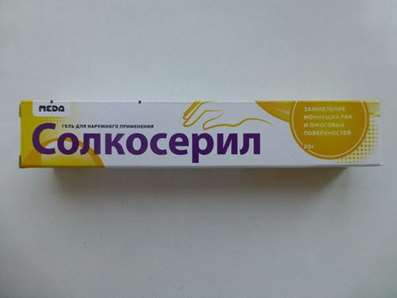Instruction for use: Afalasa
I want this, give me price
Dosage form: lozengers
ATX
G04CX Drugs for the treatment of benign prostatic hypertrophy others
Pharmacological group:
Prostate hyperplasia is a benign treatment tool [Other immunomodulators]
The nosological classification (ICD-10)
F52.2 Lack of genital response: Secondary impotence; hyposexuality; Impotence; Impotence on the basis of neurasthenia; Impotence against the background of functional nervous disorders; Impotence of different origin; Violation potency; erectile Dysfunction; potency Disorders; erectile dysfunction; Erectile dysfunction of various origins; Lack of erection; The weakening of potency; The weakening of sexual activity; The weakening of erection; Lowering the male potency; Sexual disorders in men; Sexual dysfunction; Weak potency; Reduced potency; Reduced potency; erectile disfunction; Erectile dysfunction, neurogenic
N39.4 Other specified incontinence: Urinary incontinence; Bed-wetting; Frequent nocturnal urination; Urinary incontinence in women; Anishuriya; Primary bedwetting; Primary nocturnal enuresis in children
N40 Hyperplasia of prostate gland: Prostate adenoma; BPH; Prostatauxe; prostate Hypertrophy; Dysuric disorders caused by benign prostatic hyperplasia; Dizuricheskie disorder with benign prostatic hyperplasia; Dysuria with prostate cancer; Benign prostatic giperpalaziya; Benign prostatic hyperplasia; Benign prostatic hyperplasia stages 1 and 2; Benign prostatic hyperplasia I degree; Benign prostatic hyperplasia II degree; Benign prostatic hypertrophy; The disease of the prostate gland; Acute urinary retention related to benign prostatic hyperplasia; Benign prostatic hyperplasia stages 1 and 2 in combination with prostatitis; paradoxical ischuria
N41.0 Acute prostatitis: Acute bacterial prostatitis; Urethroprostatitis; Chlamydial prostatitis
N41.1 Chronic prostatitis: Recurrent prostatitis; Chronic bacterial prostatitis; Chronic abacterial prostatitis; Chronic bacterial prostatitis; Chlamydial prostatitis; Exacerbation of chronic prostatitis; Chronic abacterial prostatitis
N50.8.0 * Menopause in men: Vascular complications of menopause; Menopause; Sexual weakness in elderly men; Climax; Men's Men's Climax; Male menopause; Pathological menopause; Premature menopause; Menopausal disorders in men; Disorders in menopause; Menopausal Symptom Complex
R30.0 Dysuria: Disorders after prostatectomy; dysuric disorder; Dysuric disorders caused by benign prostatic hyperplasia; dysuric symptoms; dizuricheskie disorder; Dizuricheskie disorder in men; Dysuria with prostate cancer; disorders of urination; dysuria; Dizuricheskie disorder with benign prostatic hyperplasia; Acute dysuria
R39.1 Other difficulties with micturition: Frequent urination; urinary retention; strangury; Obstructed flow of urine; Violation of urination; Violation of urination; Violation of bladder emptying; Violation of the outflow of urine; Frequent urination; Abnormalities of urination
Z100 * CLASS XXII Surgical practice: Abdominal surgery; adenomectomy; Amputation; Coronary angioplasty; Angioplasty of the carotid arteries; Antiseptic skin treatment for wounds; Antiseptic Hand; Appendectomy; atherectomy; Balloon coronary angioplasty; Vaginal hysterectomy; The coronary bypass; Interventions in the vagina and cervix; Interventions on the bladder; Intervention in the mouth; Restoration and reconstructive surgery; Hand hygiene of medical personnel; Gynecologic surgery; Gynecological intervention; Gynecological surgery; Hypovolemic shock during operations; Disinfection of purulent wounds; Disinfection of wounds edges; Diagnostic intervention; Diagnostic procedures; Cervical Diathermocoagulation; Long-surgery; Replacing the fistula catheters; Infection in orthopedic surgery; Artificial heart valve; cystectomy; Short-term outpatient surgery; Short-term operation; Short surgical procedures; Krikotireotomiya; Blood loss during surgery; Bleeding during surgery and in the postoperative period; Kuldotsentez; laser photocoagulation; laser coagulation; retinal laser coagulation; Laparoscopy; Laparoscopy in Gynecology; CSF fistula; Small gynecological operations; Small surgical procedures; Mastectomy and subsequent plastic; mediastinotomy; Microsurgical operations on the ear; Mukogingivalnye operation; suturing; Minor surgery; neurosurgical operation; Immobilization of the eyeball in ophthalmic surgery; testectomy; pancreatectomy; Perikardektomiya; The period of rehabilitation after surgery; The period of convalescence after surgery; Percutaneous transluminal coronary angioplasty; Pleural thoracentesis; Pneumonia postoperative and posttraumatic; Preparation for surgical procedures; Preparation for surgery; Preparation of the surgeon's hands before surgery; Preparation of the colon for surgical procedures; Postoperative aspiration pneumonia in neurosurgical and thoracic surgery; Postoperative nausea; Postoperative bleeding; postoperative granuloma; postoperative shock; The early postoperative period; myocardial revascularization; Radiectomy; gastric Resection; bowel resection; uterine Resection; liver Resection; enterectomy; Resection of part of the stomach; Reocclusion of the operated vessel; Bonding tissues during surgical procedures; Removal of sutures; Condition after eye surgery; Condition after surgery; Condition after surgery in the nasal cavity; Condition after gastrectomy; Status after resection of the small intestine; Condition after tonsillectomy; Condition after removal of the duodenum; Condition after phlebectomy; Vascular surgery; Splenectomy; Sterilization of surgical instruments; Sterilization of surgical instruments; sternotomy; Dental surgery; Dental intervention in periodontal tissues; strumectomy; Tonsillectomy; Thoracic surgery; Thoracic surgery; total gastrectomy; Transdermal intravascular coronary angioplasty; Transurethral resection; Turbinektomiya; Removal of a tooth; cataract surgery; Removal of cysts; tonsillectomy; Removal of fibroids; Removing the mobile primary teeth; Removing polyps; Removing broken tooth; Removal of the uterus body; Removal of sutures; Fistula likvoroprovodyaschih ways; Frontoetmoidogaymorotomiya; Surgical infection; Surgical treatment of chronic limb ulcers; Surgery; The surgery in the anal area; The surgery on the colon; Surgical practice; The surgical procedure; Surgical interventions; Surgery on the gastrointestinal tract; Surgical procedures on the urinary tract; Surgical procedures on the urinary system; Surgical intervention of the genitourinary system; Surgical procedures on the heart; Surgical manipulation; surgery; Surgery on the veins; Surgical intervention; Vascular surgery; Surgical treatment of thrombosis; Surgery; cholecystectomy; Partial gastric resection; hysterectomy; Percutaneous transluminal coronary angioplasty; Percutaneous transluminal angioplasty; Coronary artery bypass; tooth Extirpation; Extirpation of milk teeth; pulpectomy; pulsative cardiopulmonary bypass; tooth Extraction; teeth Extraction; cataract extraction; Electrocoagulation; endourological intervention; episiotomy; Etmoidotomiya; Complications after tooth extraction
Z98.8 Other specified post-surgical conditions: Purulent complications in the postoperative period; Suppurative complications of surgery; Postoperative liver dysfunction; Postoperative vomiting; Postoperative complications; Postoperative period; Early postoperative period
Composition
Tablets for resorption 1 table.
Active substances: Antibodies to endothelial NO synthase affinity purified * 0,006 g
Antibodies to prostate-specific antigen affinity purified * 0.006 g
Auxiliary substances: lactose monohydrate; MCC; Magnesium stearate
* Are applied to lactose in the form of a mixture of three active water-alcohol dilutions of the substance diluted 10012, 10030, 100200 times, respectively
Description of dosage form
Tablets are flat-cylindrical, with a risk and chamfer, from white to almost white. On the side with the risk there is an inscription "MATERIA MEDICA", on the other - "AFALAZA".
Pharmachologic effect
Mode of action - anti-inflammatory, antidisuric.
Pharmacodynamics
Antibodies to PSA affinely purified modify the functional activity of endogenous PSA, altered in benign prostatic hyperplasia, which is accompanied by an increase in the regulatory effect of this antigen on functional and metabolic processes in the prostate tissue. Antibodies to PSA have a preventive and curative effect in prostate adenoma.
Antibodies to endothelial NO synthase affinely purified promote an increase in the rate of blood flow in the vessels of the penis and prostate; Have a protective effect in relation to the endothelium (contribute to a decrease in vascular reactivity, reduce vascular spasm and improve peripheral microcirculation).
The combined use of components in the complex preparation of Afalase is accompanied by a synergistic effect: antibodies to endothelial NO synthase due to endothelioprotective action and improved vascularization enhance the antiproliferative and anti-inflammatory activity of antibodies to PSA. The synergistic effect is probably also due to nonspecific mechanisms of amplification of intracellular signal transduction by antibodies to endothelial NO synthase.
Complex use of the components of the drug improves the quality of life of patients with BPH and prostatitis, reducing dysuric disorders and erectile dysfunction; Has vegetative stabilizing effect. The presence of a pronounced anti-inflammatory and anti-edematous effect is experimentally demonstrated.
The drug helps normalize the functional state of the prostate and lower urinary tract, improve urodynamics (decrease residual urine volume, increase the maximum rate of urinary excretion), normalize PSA. The drug also contributes to the reduction of dysuric disorders, and in some cases to a moderate decrease in the volume of the prostate gland. Joint use of components improves spermatological parameters (increase in the concentration of sex hormones, the number of spermatozoa and their mobility, decrease viscosity of seminal fluid, normalization of the secretion of the prostate gland); Activates regenerative-reparation processes in patients who underwent surgery for BPH, reduces the likelihood of complications after surgery.
Pharmacokinetics
The sensitivity of modern physicochemical methods of analysis (gas-liquid chromatography, high-performance liquid chromatography, chromatography-mass spectrometry) does not allow to estimate the content of ultra-small doses of antibodies in biological fluids, organs and tissues, which makes it technically impossible to study the pharmacokinetics of the drug Afalasa.
Indication of the Afalasa
Benign prostatic hyperplasia of the I and II stages;
In the complex therapy of acute and chronic prostatitis (as an anti-inflammatory and anesthetic agent);
Dysuric disorders (frequent urge to urinate, difficulty urinating, pain and discomfort in the perineal region)
Erectile dysfunction (erectile dysfunction) of various origin;
Vegetative disorders of the climacteric period in men (including weakness, fatigue, decreased physical activity, decreased libido);
Complex therapy before and after surgical interventions on the prostate gland.
Contraindications
Increased individual sensitivity to the components of the drug.
Side effects
When using the drug for the indicated indications and in the indicated dosages, side effects were not revealed.
Interaction
Cases of incompatibility with other drugs have not been recorded so far.
Dosing and Administration
Inside, not during a meal. At one time - 2 tables. (Keep in your mouth until completely dissolved). The drug should be taken twice a day, in the evening and in the morning.
The recommended duration of the drug is 16 weeks. At the expressed painful syndrome and dysuric disturbances in the first 2-3 weeks of therapy the reception of a preparation is shown up to 4 times a day.
If necessary, on the recommendation of a doctor, a repeat course of treatment can be performed after 1-4 months.
Overdose
In case of an accidental overdose, dyspeptic events due to the excipients included in the formulation are possible.
Special instructions
The composition of the drug includes lactose, and therefore it is not recommended to appoint patients with congenital galactosemia, glucose malabsorption syndrome or galactose, or with congenital lactase insufficiency.
The effect of the drug on the ability to drive vehicles or work with other potentially dangerous mechanisms. Does not affect.
Release form
Lozenges. For 20 tablets. In a planar cell box made of a PVC film or aluminum foil. For 1, 2 or 5 contour squares are placed in a pack of cardboard.
Manufacturer
OOO NPF Materia Medica Holding. Russia, Moscow
Conditions of supply of pharmacies
Without recipe.
Storage conditions of the drug Afalasa
In the dark place at a temperature of no higher than 25 ° C.
Keep out of the reach of children.
Shelf life of the drug Afalasa
3 years.
Do not use after the expiry date printed on the package.

 Cart
Cart





